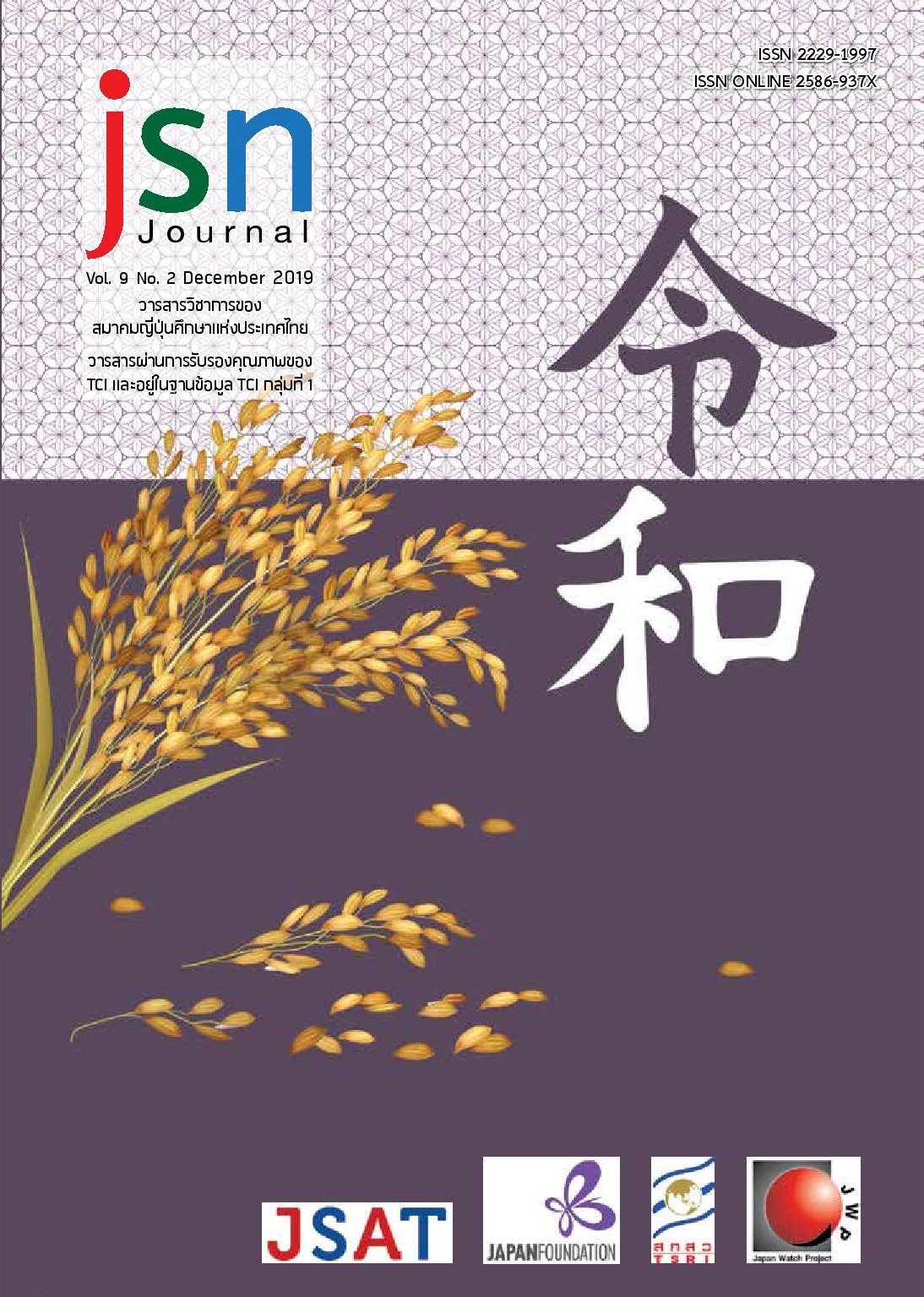Thai Students’ Attitudes toward Co-Teaching between Thai Teachers and Japanese Teachers: the Case of a Conversation Class for Beginners
Main Article Content
Abstract
The objective of this research was to study the attitudes of Thai learners in a beginner's Japanese conversation class. The population of the study was enrolled in the course Listening-Speaking I, which implemented co-teaching between Thai teachers and Japanese teachers. Data were collected using questionnaire with 74 students. The results revealed that the learners had positive attitudes toward the concept of co-teaching. As ideal ratio of Thai teachers to Japanese teachers delivering instruction for the course Listening-Speaking I, the ratio 50:50 was most selected compared with the ratio 100:0, 75:25, 25:75, and 0:100. The findings demonstrated the learners’ beliefs and preferences toward Thai teachers and Japanese teachers. The learners expected the Japanese teachers to be a good pronunciation role model while they expected the Thai teachers to provide a better understanding of language usage. Both the Thai teachers and Japanese teachers had an essential role in encouraging the learners to be motivated to learn the language and to practice it. The results also showed differences in learners’ attitudes toward self-expectations of communication skills between student groups, 1) the experienced major students, 2) the inexperienced major students, and 3) the non-major students.
Article Details
ข้อความและข้อคิดเห็นต่างๆ ในบทความเป็นของผู้เขียนบทความนั้นๆ ไม่ใช่ความเห็นของกองบรรณาธิการหรือของวารสาร jsn Journal
References
ยุพกา ฟูกุชิม่า. (2562). ทัศนคติของผู้เรียนต่อการบรรยายด้วยภาษาญี่ปุ่นของผู้สอนชาวไทยในรายวิชาการอ่านภาษาญี่ปุ่นขั้นสูง. jsn Journal, 9(1), 25-48.
อมรรัตน์ มะโนบาล และ เตวิช เสวตไอยาราม. (2560). การศึกษาความวิตกกังวลในการเรียนรู้ภาษาญี่ปุ่นของผู้เรียนระดับต้นที่มีพื้นฐานภาษาญี่ปุ่นแตกต่างกัน. jsn Journal, 7 (1), 33-50.
อัษฎายุทธ ชูศรี. (2555). การใช้ภาษาญี่ปุ่นในการบรรยายโดยผู้สอนชาวไทย กรณีศึกษาการสอนวิชาเนื้อหาระดับกลาง สูง ในจุฬาลงกรณ์มหาวิทยาลัย.『国際交流基金バンコク日本文化センター 日本語教育紀要』. 9, 139-144.
Cook, L. (2004). Co-Teaching: Principles, Practices, and Pragmatics. New Mexico Public Education Department Quarterly Special Education Meeting, New Mexico Public Education Department.
Cook, L., & Friend, M. (1995). Co-teaching: Guidelines for creating effective practices. Teaching Exceptional Children, 28, 1-16.
Shih Yun Tsou, and Ying Ling Chen. (2017). EFL College Students’ Perceptions toward Native and Non-Native English Speaking Teachers. American Journal of Educational Research, 5(12), 1182-1190.
阿部洋子・横山紀子. (1991).「海外日本語教師長期研修の課題―外国人日本語教師の利点を生かした教授法を求めて―」『日本語国際センター紀要』1,53-74. 国際交流基金日本語国際センター.
池谷清美・Kanokwan Laohaburanakit KATAGIRI・片桐準二(2012).「 タイ国高等教育機関におけるタイ人教師と日本人教師の協働観の比較― PAC 分析からの考察― 」『国際交流基金バンコク日本文化センター日本語教育紀要』9, 29-38. 国際交流基金 バンコク日本文化センター .
国際交流基金. (2016).『2015年度海外日本語教育機関調査』Retrieved August 1, 2019, from
https://www.jpf.go.jp/j/project/japanese/survey/result/dl/survey_2015/all.pdf
櫻井勇介. (2012).「母語話者教員と非母語話者教員に対する学習者の「よい教師」像一エジプト人日本語学習者の場合」『日本語·日本学研究』2, 17-32. 東京外国語大学国際日本研究センター.
Saranya Kongjit・吉田直子. (2012). 「ティーム・ティーチングにおけるネイティブ教師とノンネイティブ教師の役割分担―チェンマイ大学初級日本語クラスのタイ人学習者の期待―」『国際交流基金バンコク日本文化センター日本語教育紀要』9, 129-137.
戸田淑子.(2016).「チームワークで乗り越えろ-海外で教育効果を発揮するチームワーク-」五味政信・石黒圭(編)『心ときめくオキテ破りの日本語教授法』,28-47. くろしお出版.
中村則子.(2013).「非母語話者教師と母語話者教師の発音指導―ベトナムにおけるアンケート調査の結果から―」『東京外国語大学留学生日本語教育センター論集』39, 113-124.
中山英治・門脇 薫・高橋雅子.(2015).「日本語非母語話者教師と母語話者教師による教師間協働の実態調査報告」『いわき明星大学人文学部研究紀要』28, 19-34.


